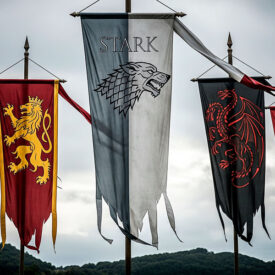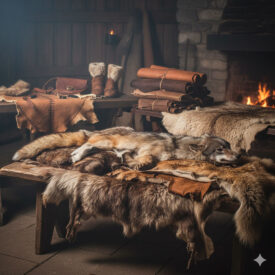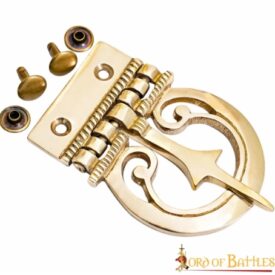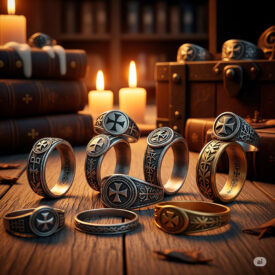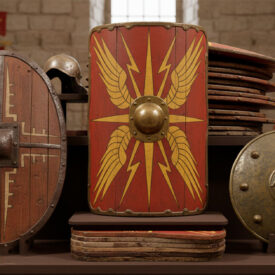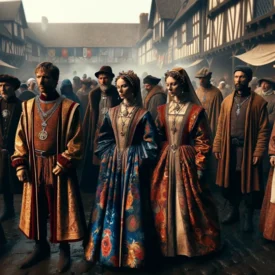What story lies beneath the canvas of a medieval tent? Imagine a field streaked with banners, the murmur of blacksmiths and the embers of the hearths: in that landscape, tents were not simple shelters, they were mobile palaces and visible signals of power.
In this article you will discover the origin, evolution and types of medieval tents and shelters, their materials and techniques, how to read their symbolic language and what to consider today if you are looking for replicas for historical reenactments or events. You will learn to distinguish a Bedouin jaima from a noble pavilion, understand the chronology of their development and get conservation and safety tips adapted to modern regulations.
Medieval tents: evolution and uses over time
| Period | Event |
|---|---|
| Origins and background (Antiquity – early Middle Ages) | |
| Origins in antiquity | The first tents were already used in civilizations such as the Hebrews, Greeks and Romans for military, religious, commercial and meeting purposes. |
| Initial design | Simple tents with wooden poles and skins or coarse fabrics (wool, linen), light and portable; limited waterproofing. |
| Early hierarchies | In the Early Middle Ages differences appear: soldiers in Spartan tents and commanders in larger, more comfortable accommodations. |
| High Middle Ages: development and specialization (c. 11th–13th centuries) | |
| Specialization of forms | Specialized types emerge: wedge tent (“A” shape) for soldiers and travelers; Viking tent (geteld) semicircular for harsh climates; circular/conical tents for knights; noble pavilions and merchant tents for markets. |
| Materials and treatments | Fine linen and imported cotton were used alongside heavy canvases; wax/oil treatments improved waterproofing; ground tarps were used. |
| Structural advances | Development of more complex frames (multiple masts, rope systems) for larger, more stable tents. |
| Social and symbolic function | Tents became status symbols: richly decorated pavilions, shields and banners conveyed hierarchy; the choice of colors and symbols was meaningful. |
| Late Middle Ages: peak and luxury (c. 14th–15th centuries) | |
| Expanded and ceremonial use | Tents served for tournaments, great feasts, hunts and diplomatic acts; they acted as mobile palaces for kings and princes (e.g. references to large ceremonial fields). |
| Models and ornamentation | Elaborate designs developed (Bordeaux, Burgundy, Battlemented Tent) with bright colors, heavy fabrics and embroidery; tents displayed luxury and distinction. |
| Noble materials | Silk, brocade and velvet were used in high society; more refined dyes (e.g. purple) reserved for royalty and the elite. |
| Fittings and assembly | Metal fittings were incorporated into wooden structures for greater stability and to facilitate assembly and disassembly. |
| Summary | |
| General evolution | From functional, portable shelters they evolved into complex, luxurious constructions reflecting technical advances, social hierarchy and cultural influences throughout the Middle Ages. |
Origin and evolution: from jaimas to the royal pavilion
 The history of medieval tents is an epic of practical ingenuity. They began from the nomadic need to pitch and strike dwellings in a few hours and transformed, centuries later, into stages for diplomacy and power. The jaima is a perfect example: born of the desert, woven from goat hide and adapted by the Bedouins to resist rain and wind, its form and technique were exported and modified through contact with other cultures.
The history of medieval tents is an epic of practical ingenuity. They began from the nomadic need to pitch and strike dwellings in a few hours and transformed, centuries later, into stages for diplomacy and power. The jaima is a perfect example: born of the desert, woven from goat hide and adapted by the Bedouins to resist rain and wind, its form and technique were exported and modified through contact with other cultures.
As armies became more organized and courts more ceremonial, tents grew in size and complexity. Multiple poles, tension ropes and metal reinforcements made possible pavilions where audiences were held, battles planned and lineage displayed through colours and embroidery.
Contact between East and West — via trade routes and the Crusades — introduced typologies like the “Qubbah” and other dome forms that influenced European royal pavilions. That cultural fusion explains why today we can recognize oriental elements in some European noble tents.
Types and shapes: a visual and comparative guide
Reading a tent is like reading a banner: its shape indicates its function. Here are the models most often found in historical sources and how to recognize them.
| Type | Description | Typical use | Main advantage |
|---|---|---|---|
| Conical / bell tent | Rises from a single central point or with a central mast, sloping walls and good aerodynamics. | Military camps and small noble accommodations. | Wind resistance and a communal central space. |
| Polygonal pavilion | Construction with multiple masts and sections; often decorated with friezes and embroidery. | Temporary noble residences and audience halls. | Large capacity and the possibility of interior division. |
| Rectangular tent (Herwald) | “A”-frame structure with two slopes, practical and easy to assemble. | Markets, workshops and travel accommodation. | Transportable and stable on varied terrain. |
| Jaima / Bedouin tent | Awning supported by masts and anchored with ropes; fabric and leather in arid climates. | Nomadic dwelling and transhumant camps. | Quick to pitch and adaptable to the desert. |
Types in action: visual examples
Modern reenactments allow us to see the difference between a Saxon tent, practical and compact, and a tournament pavilion decorated with friezes and banners. Observing these replicas helps understand historical decisions such as fabric choice, number of poles and location within the camp.
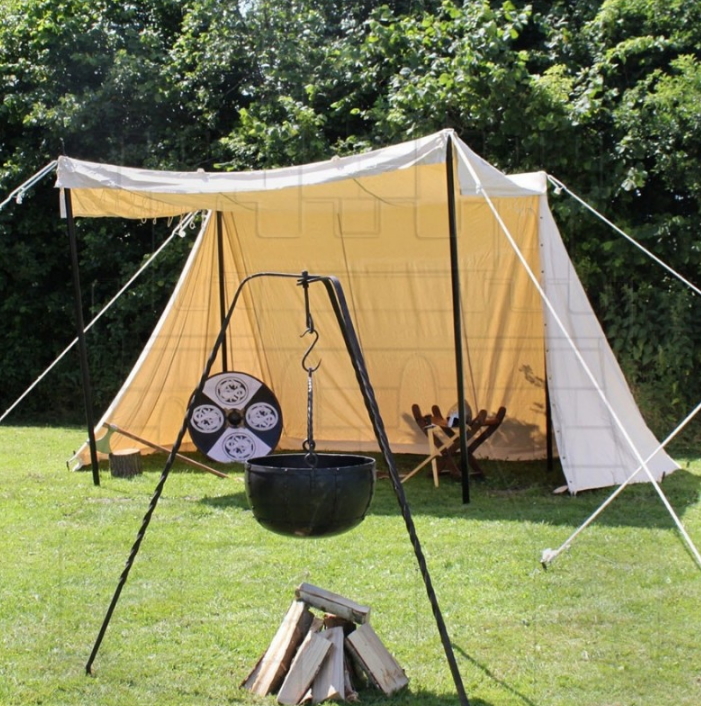
Materials, treatments and frame
Material choices were dictated by climate and function. Linen, wool and cotton dominated the fabrics, each with virtues and limits. Linen was durable and relatively breathable; cotton, easy to dye; wool, naturally water-repellent and insulating.
Craftsmen applied waxes, oils and tanning to waterproof. Poles came from oak and beech; ropes were hemp. In the largest tents metal fittings were incorporated to ease assembly and increase safety against strong winds and heavy rain.
Traditional treatments and modern solutions
Historical techniques (linseed, waxes, tanning) are combined today with modern solutions: fabrics that mimic the natural look but offer fire retardancy and water repellency. Hybrid approaches achieve visual authenticity without sacrificing safety and durability.
Maintenance also changes: a historic tent requires gentle cleaning, complete drying and storage in dry environments. Small timely repairs prevent a small tear in the canvas from becoming an irreparable ruin.
Colours, heraldry and the silent language of the tent
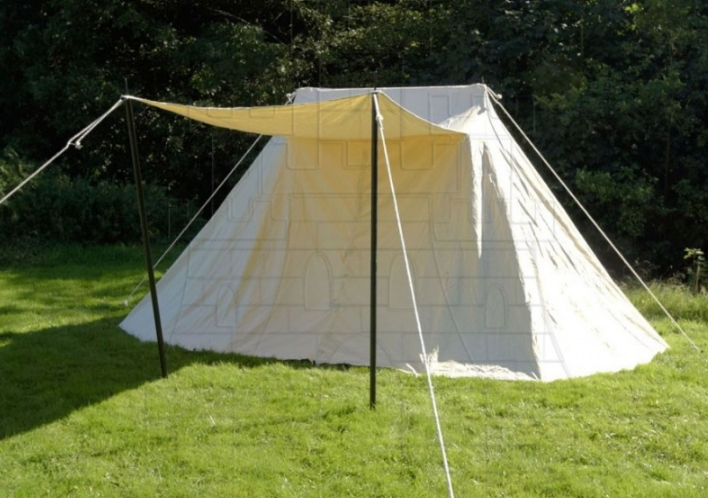
A tent painted its owner’s identity in colours and symbols. Red and gold spoke of power; blue, of devotion; white, of purity; black, of mourning or authority. Shields and vegetal motifs told of lineage and alliances.
In a camp those signs allowed orientation and recognition of allies and enemies. At tournaments, tents were stages for ostentation: trophies, embroidery and tapestries transformed canvases into ephemeral palaces.
Beyond lodging: uses in war, fairs and festivities
In war, tents were headquarters and logistics centers: the commander’s tent concentrated maps, correspondents and decisions. Workshops, field hospitals and depots turned the camp into a mobile logistics chain.
At fairs and markets, canopies protected goods and created trading spaces. At tournaments, tents provided dressing rooms, reception halls and banquets. In everyday life they served as artisan workshops and stops for travelers and pilgrims.
How to choose a replica today: authenticity, safety and use
If you are looking for a tent for reenactments, LARP or themed events, your decision must balance authenticity and regulations. Ask yourself: will it be used frequently outdoors? Do you need fire retardancy? Will you transport it often? The answer will determine the type of fabric and frame you need.
Practical tips: opt for fire-treated materials for public events; consider metal frames for greater stability; choose modular designs if you need to divide the interior. A well-planned assembly reduces risks and improves the participants’ experience.
Products, replicas and where to focus attention
When evaluating replicas, check the quality of seams, reinforcements at tension points and the treatment of the canvas. Visible details —embroidery, windows with curtains, fringes— increase immersion, but the robustness of the frame and protection against the weather ensure the replica will serve its function in the long term.
Quick comparison: which option to choose according to your use?
| Use | Recommended type | Ideal material | Practical note |
|---|---|---|---|
| Historical reenactment at a public event | Polygonal pavilion with heraldry | Treated linen or hybrid mix with fire retardant | Prioritize safety and visual authenticity. |
| Nomadic camp or Bedouin setting | Traditional jaima | Durable fabric + water-repellent treatment | Quick to pitch, good ventilation in hot climates. |
| Market and itinerant stalls | Rectangular tent / Herwald | Heavy cotton or modern canvas | Easy to assemble and good weight/resistance ratio. |
| Events in bad weather | Metal frame with treated cover | Synthetic fabrics with natural appearance | Prioritize waterproofing and strong anchors. |
The art of building: techniques that stand the test of time
Forging a tent is practicing an ancient engineering. The frame is designed to distribute tensions; ropes use traditional knots that allow quick tension adjustments; pegs —when the ground allows— anchor the structure and prevent it from overturning in the wind.
Decoration, far from being merely aesthetic, reinforces identity. Metallic-thread embroidery or paint with durable pigments played the same role as a logo does today: identification and visual propaganda of status.
Preserving and maintaining: care that prolongs a tent’s life
Careful maintenance is the difference between a good shelter and a deteriorated memory. Clean with a soft brush, avoid harsh detergents, dry thoroughly and reapply protective waxes as needed. Check tensioners and seams after each use and make small repairs before storing.
Store the tent dry, in breathable bags and in a cool place. If you use natural fabrics treated with oils, check periodically to avoid corrosion and degradation of metal fittings.
We clear up doubts about medieval tents and modern canopies
What are the main differences between medieval tents and modern canopies?
The main differences between medieval tents and modern canopies lie in their materials, construction, functionality and aesthetic purpose:
- Materials and structure: Medieval tents were made mainly of natural fabrics (canvas, cotton, linen) and wood, with complex craft techniques. Modern canopies use synthetic materials such as waterproof polyester and metal structures in aluminium or steel, which guarantee resistance, durability and ease of assembly.
- Functionality and assembly: Medieval tents were often heavy, erected with traditional methods and required time and skill to install. Modern canopies are foldable, designed for quick assembly without tools, with accessories like wheels and transport covers.
- Aesthetics and symbolism: Medieval tents also served as symbols of social status, decorated with embroidery, heraldic shields and tapestries, integrating art and social messaging. Modern canopies mimic that aesthetic with colours and designs inspired by the Middle Ages, but without the elaborate original handcrafted details, adapting to themed events or historical reenactments.
- Use and current context: While medieval tents had functional uses in military campaigns, fairs and temporary dwellings, modern canopies are oriented to facilitate events, markets and reenactments, combining visual authenticity with the comfort and current safety and durability regulations.
What materials were commonly used to build medieval tents?
Medieval tents were commonly built with durable fabrics such as linen, heavy cotton and canvas. Linen was widely used for its robustness and breathability, while cotton gained popularity because it was lighter, breathable and easy to dye. Canvas, derived from linen fibres, was valued for its durability and resistance against wind and light rain. Additionally, in cold or humid regions wool was used for its water-repellent properties. For more luxurious tents, such as those of nobles, fine fabrics like silk were sometimes incorporated into decorative elements, although not for the main structure.
How did medieval tents influence social hierarchy in the Middle Ages?
Medieval tents significantly influenced the social hierarchy of the Middle Ages by functioning not only as shelters but as visible communicative symbols of status and social power of their owners. Those of the nobility and royalty were sumptuous, decorated with rich fabrics, colours like purple and heraldic emblems that reflected lineage and prestige, while those of knights and merchants varied in size and ornamentation according to rank or wealth. Conversely, the humble tents of peasants and soldiers were simple and functional, clearly displaying social differences. Moreover, in markets, fairs or camps, these tents acted as meeting, trade and community spaces, reinforcing hierarchical social structures and enabling interactions that rarely occurred in everyday life. Thus, medieval tents not only housed people but also expressed and maintained the divisions and social order of the Middle Ages.
What types of products were sold in medieval tents?
In medieval tents, products commonly sold included staple foods (bread, meat, vegetables, spices), textiles and clothing, household utensils, tools, weapons and armour, as well as everyday objects and artisanal goods. Imported products such as spices and fine fabrics could also be found depending on the market or fair. Weapons and armour were common in specialised markets. At major fairs, luxury items and goods related to the nobility and international trade were also sold.
How were medieval tents decorated to reflect their owners’ status?
Medieval tents were decorated to reflect their owners’ status using fine fabrics, precious colours (such as purple reserved for the nobility), embroidery with gold and silver threads, and heraldic symbols that displayed lineage and alliances. Furthermore, the size and complexity of the tent, as well as the number of rooms and elaborate furniture, indicated social hierarchy; kings and nobles had large, sumptuous pavilions, while knights displayed shields and colours on sturdy but less ostentatious tents. At tournaments and court events, tents were also richly adorned with banners and trophies to showcase power and prestige.
Legacy and influence of medieval tents today
The impact of medieval tents endures: from tensioned structures in modern architecture to the taste for themed “glamping” and historical reenactments. The idea of mobile, flexible housing continues to inspire contemporary solutions in events and temporary design.
Current replicas seek balance: aesthetic authenticity combined with modern treatments that ensure safety, durability and comfort. For enthusiasts, each tent is a way to translate history into a sensory experience: the smell of canvas, the sound of taut ropes, the sight of a banner waving in the wind.

